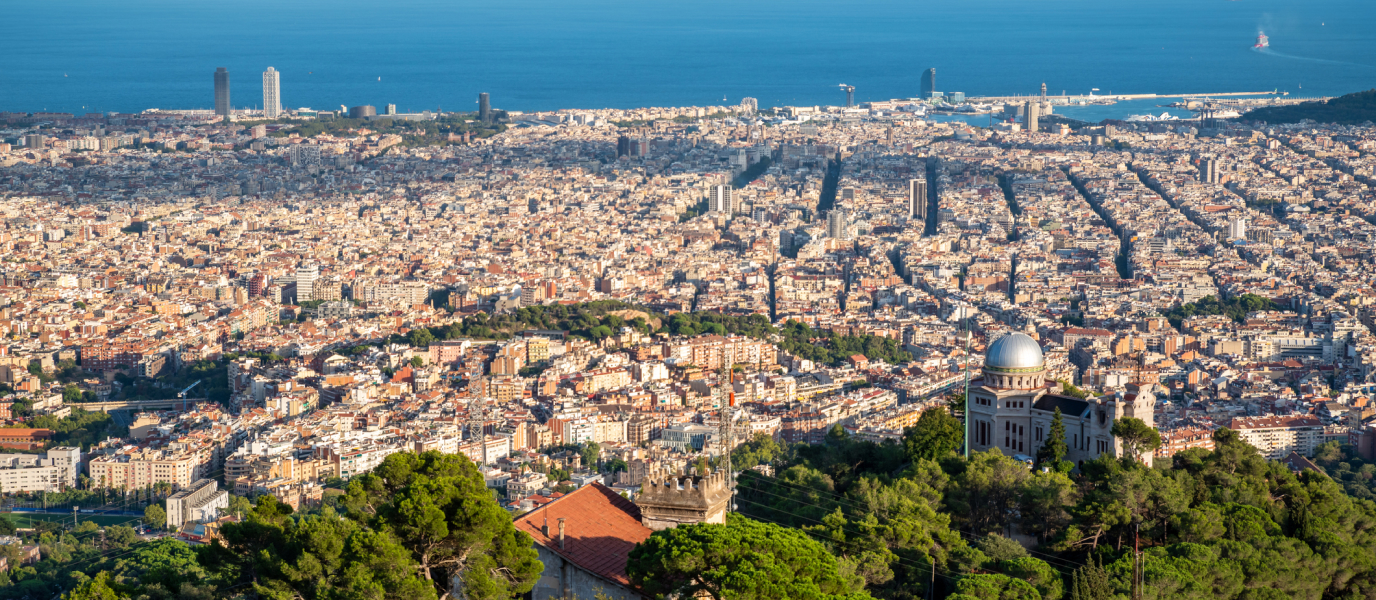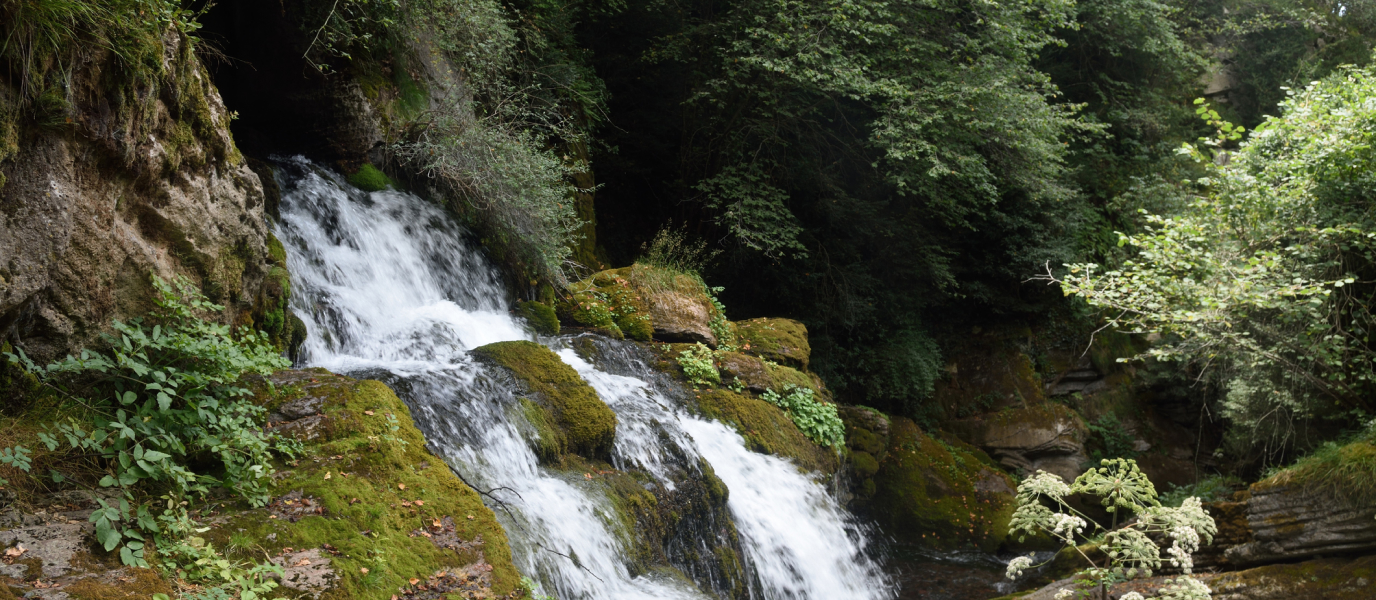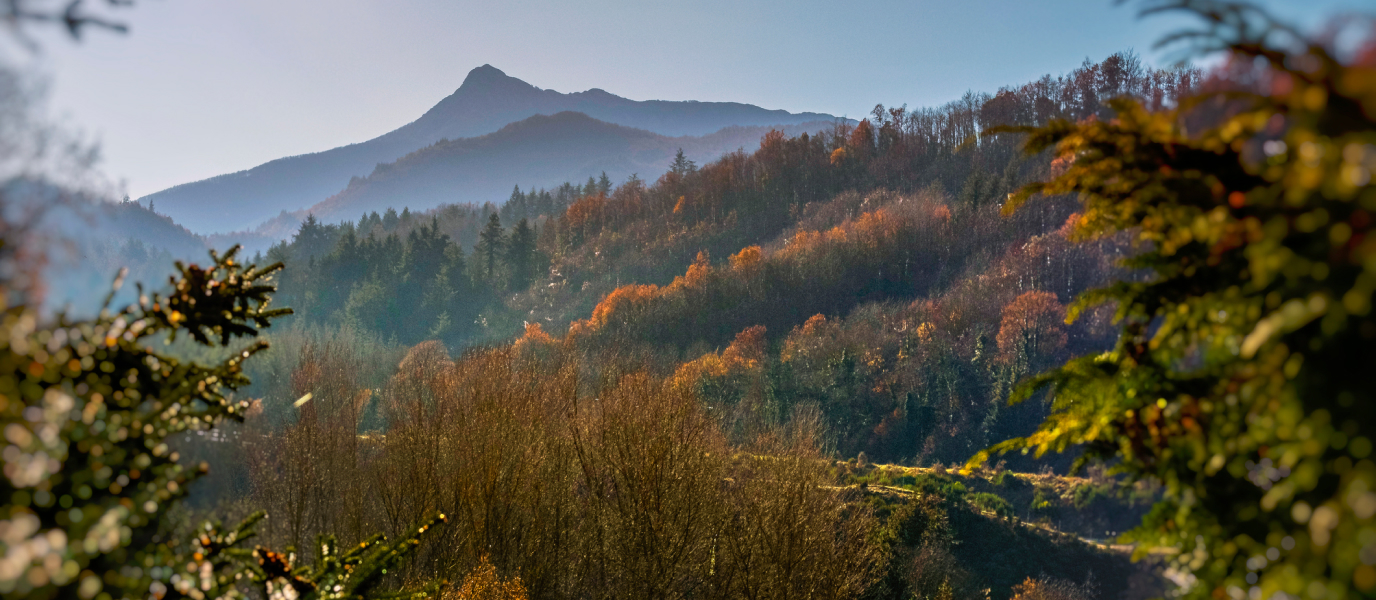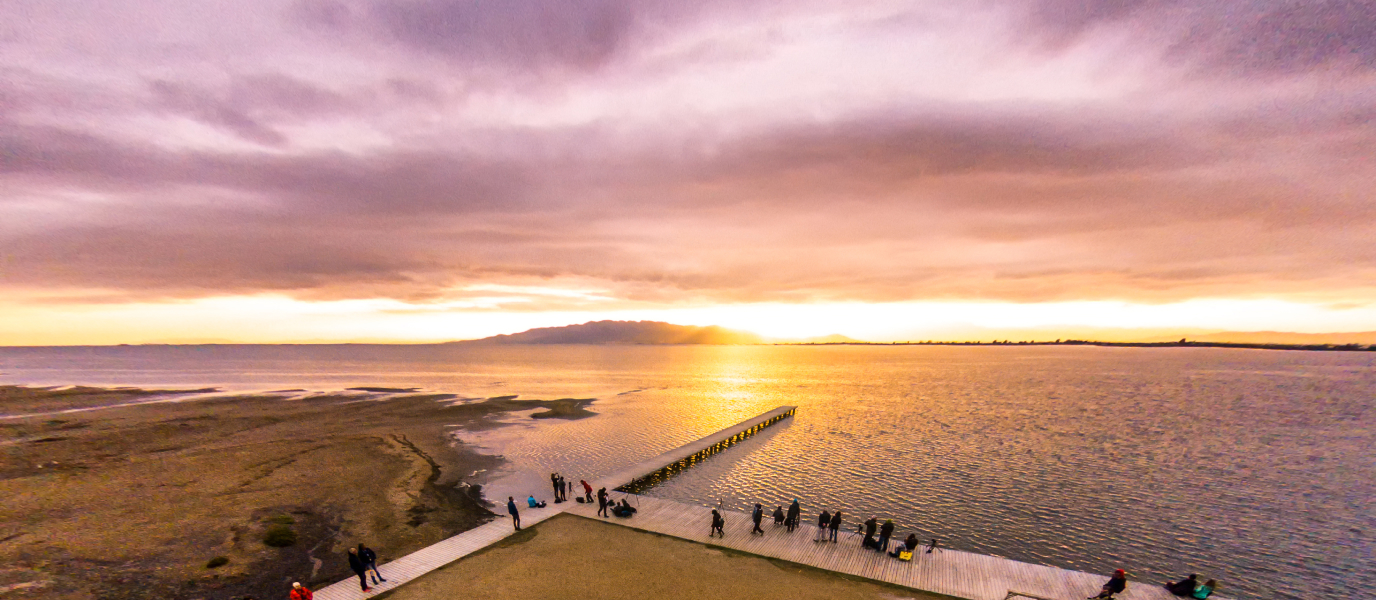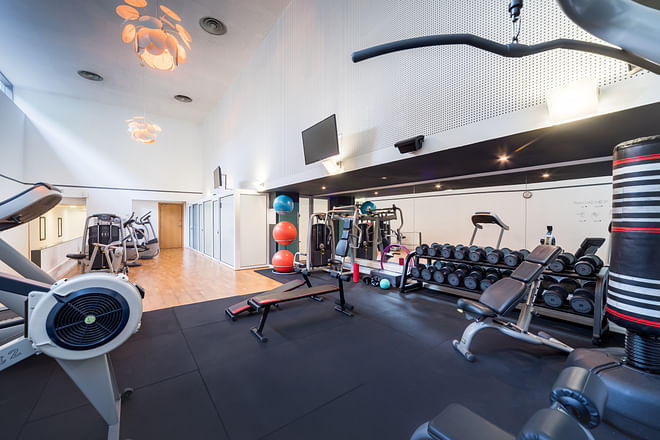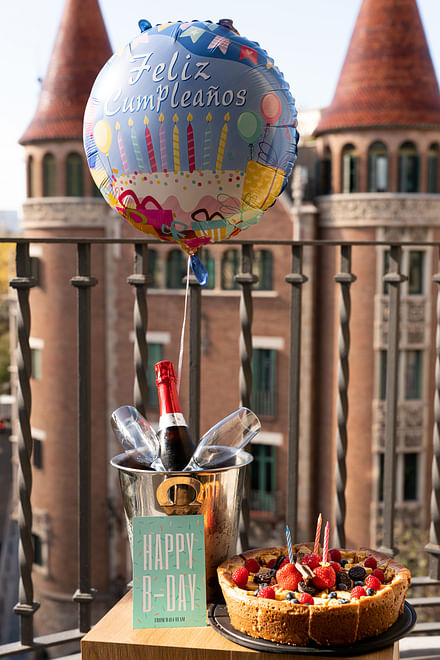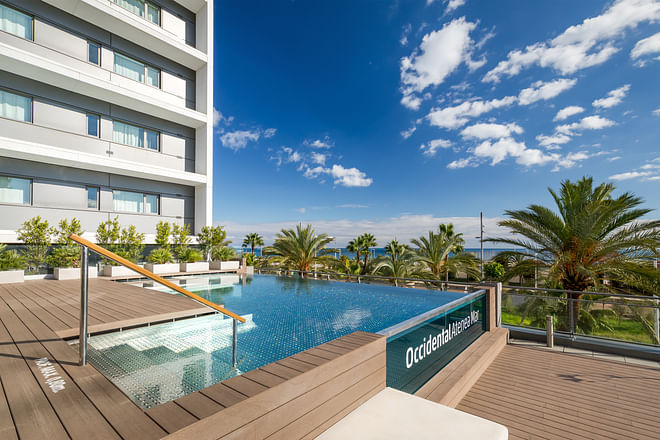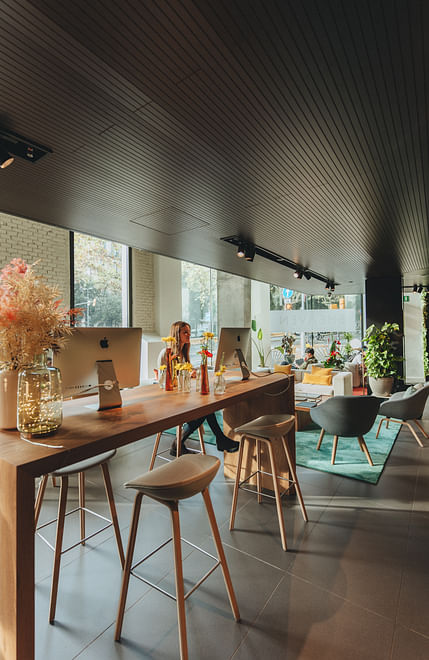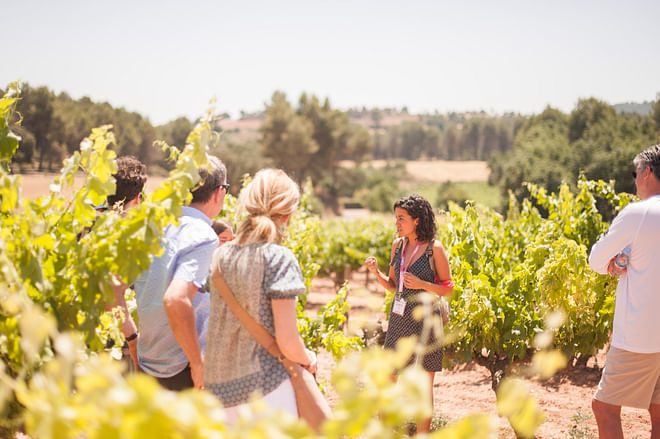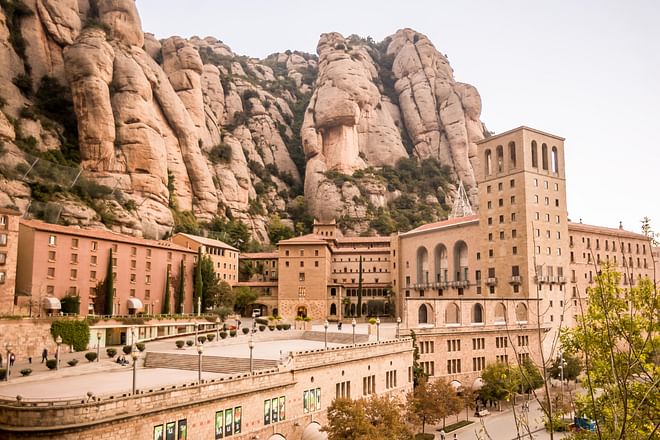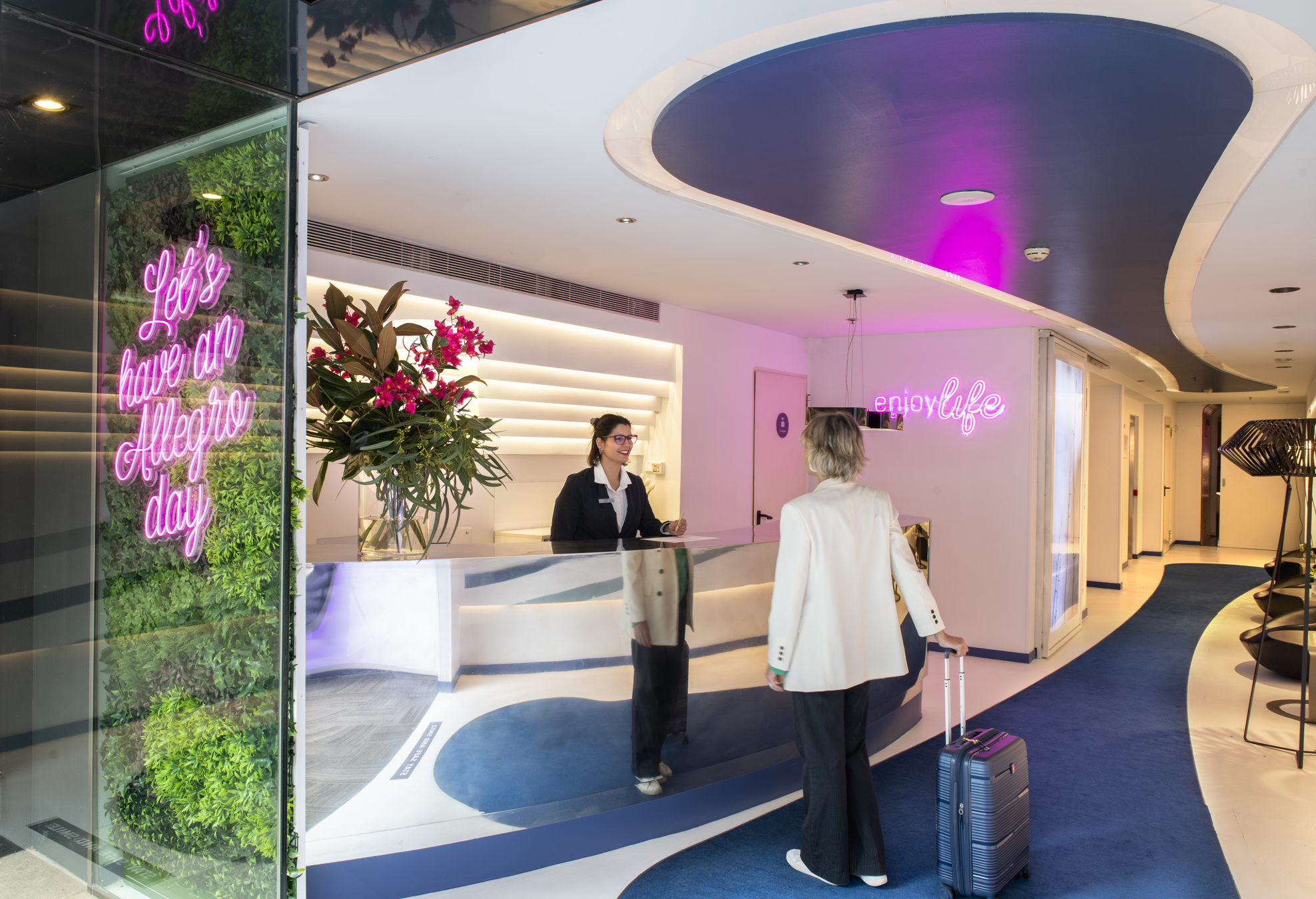The Parc Natural de la Serra de Collserola [Collserola Natural Park] is Barcelona’s largest natural space, if you don’t count the Mediterranean Sea. A green expanse that includes part of four districts in the capital and eight further municipalities in the Barcelona metropolitan area.
It covers more than 8,000 hectares and is rife with plant and animal life, making it one of the best day trips from Barcelona for both local residents and visitors to the city. The Serra de Collserola also includes stunning attractions such as Tibidabo mountain. And don’t forget viewpoints such as Torre Baró and Finestrelles hill that give you a bird’s eye view of the whole city and its surroundings.
What is the Serra de Collserola like?
The Serra de Collserola is a small coastal mountain range that runs almost parallel to the Mediterranean Sea. It’s been a protected space since 1987 but long before it was awarded this official status both Barcelona residents and neighbours from Cerdanyola del Vallès, Esplugues de Llobregat, Molins de Rei, Montcada i Reixac, El Papiol, Sant Cugat del Vallès, Sant Feliu de Llobregat and Sant Just Desvern would come to the park to enjoy its wonderful landscapes.
In fact, the Les Planes and Passeig de les Aigües picnic areas are hugely popular on weekends, busy with visitors as soon as the good weather arrives. It’s also known for traditional customs, for example, thousands of locals head to the park in spring to pick asparagus and to gather mushrooms when the wet weather sets in at the beginning of autumn.
The Serra de Collserola is also a residential area and some of its housing urbanisations are among the most coveted and sought-after in the city.
Routes in the Serra de Collserola
An area as large as Collserola means there are plenty of hiking and bicycle routes with varying levels of difficulty. Some of the most popular and interesting in terms of the landscape are:
- Barcelona at your feet: Medium difficulty and just over 8 km in length, it connects the Torre Baró viewpoint to Tibidabo. You’ll enjoy some of the most spectacular panoramic views of Barcelona with the Mediterranean Sea in the background.
- Vallvidrera park and reservoir: Medium difficulty and 7.5 km in length. The route is a constant series of uphill and downhill stretches until you reach the centre of Vallvidrera, leading you through a fairy tale forest along the way.
- Sant Cugat to Cerdanyola: A good part of the route follows the Vallès riverbank. The route is easy, even if it’s slightly longer at 13.5 km in length. One advantage is that you can reach the end and return to Barcelona by train from the stations in either town.
- The mysterious dragon: A perfect route for children who are ten years old and above. Before reaching Can Ribes, a seventeenth-century country house and the return point, you’ll enjoy impressive views of the San Lorenzo and Montserrat massifs.
- The two castles: One of the most challenging routes in Parc de Collserola. It’s 27 km in length and runs between Sant Feliu de Llobregat and El Papiol, passing Molins del Rei en route.
Ecological value of Parc de Collserola
The protected space of Collserola has five different habitats classified according to the dominant type of plant life found in each: holm oak forests, pine forests, gallery forests, aquatic environments and scrubland.
The most common plant species found in the park are Aleppo pine, holm oak and the Quercus cerrioides oak. Broom and flax-leaved daphne are the most frequent types of shrub. In addition, the level of protection enjoyed by this natural space means that 7% of Collserola’s surface area is set aside for crops.
In turn, the king of the animals that populate these mountains is the wild boar, and they’re now so accustomed to people that they’re often spotted rummaging in rubbish for food in uphill city neighbourhoods.
Other mammal species that live here are rather more timid, such as genets, foxes, weasels, badgers, rabbits, hedgehogs and field mice. In terms of birds, highlights include the European crested tit, great tit, blackbird, robin, Eurasian sparrowhawk, Northern goshawk, tawny owl and lesser whitethroat. You might also catch sight of some fire salamanders, while the Catalan barbel inhabits the park’s watercourses.
Traces of Mankind in the park
The Torre de Collserola stands out more than any other feature in the park’s landscape. This telecommunications tower was built for the 1992 Olympic Games; it’s 288.40 m tall and was designed by British architect Norman Foster.
However, Man had already left plenty of traces in the park long before the tower put in an appearance. Some of the most important sites and constructions are:
- Poblat Iberic de Ca n’Oliver: Iberian settlement dating from 550 B.C. Part of the fortified walls of the houses remain and it stands out for the wide variety of ceramics that were both made here and imported.
- Cova de la Torre Negra: A Neolithic funeral site. Individual burials, mass ossuaries and bell-shaped urns have been found here.
- Poblat de la Penya del Moro: There are clear traces that this zone was occupied by the Laietani (Iberian people) and it also has the ruins of a medieval fortification. The earliest remains date back to around 550 B.C.
- Santa Margarida de Valldonzella: Remains of an ancient Cistercian convent, including part of the walls of the twelfth-century Romanesque church.
- Castell del Papiol: An eleventh-century castle that dominates the Llobregat valley. It was rebuilt after an earthquake in 1448. The castle is privately owned and until recently the family it belongs to lived here.
- Torre Baró: Residence of the bourgeois Baró family at the beginning of the twentieth century. Today it’s an information and environmental education centre.
- Pantà de Vallvidrera: Reservoir that opened in 1864. Today the keeper’s house is the Espai d’Interpretació del Pantà de Vallvidrera, an interpretation centre that has an interesting exhibition about the ecological value of the park.
- L’Observatori Fabra: Designed by Doménech Estapà, the observatory sits on one of the Tibidabo foothills and was created for astronomical observation. It’s one of the most well-known buildings in Barcelona.




































































